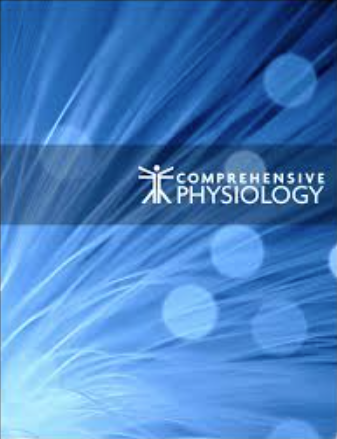下载PDF
{"title":"肾脏中的细胞外囊泡 MicroRNA","authors":"Sekyung Oh, Chang M Lee, Sang-H Kwon","doi":"10.1002/cphy.c220023","DOIUrl":null,"url":null,"abstract":"<p><p>Most cells in our body release membrane-bound, nano-sized particles into the extracellular milieu through cellular metabolic processes. Various types of macromolecules, reflecting the physiological and pathological status of the producing cells, are packaged into such so-called extracellular vesicles (EVs), which can travel over a distance to target cells, thereby transmitting donor cell information. The short, noncoding ribonucleic acid (RNA) called microRNA (miRNA) takes a crucial part in EV-resident macromolecules. Notably, EVs transferring miRNAs can induce alterations in the gene expression profiles of the recipient cells, through genetically instructed, base-pairing interaction between the miRNAs and their target cell messenger RNAs (mRNAs), resulting in either nucleolytic decay or translational halt of the engaged mRNAs. As in other body fluids, EVs released in urine, termed urinary EVs (uEVs), carry specific sets of miRNA molecules, which indicate either normal or diseased states of the kidney, the principal source of uEVs. Studies have therefore been directed to elucidate the contents and biological roles of miRNAs in uEVs and moreover to utilize the gene regulatory properties of miRNA cargos in ameliorating kidney diseases through their delivery via engineered EVs. We here review the fundamental principles of the biology of EVs and miRNA as well as our current understanding of the biological roles and applications of EV-loaded miRNAs in the kidney. We further discuss the limitations of contemporary research approaches, suggesting future directions to overcome the difficulties to advance both the basic biological understanding of miRNAs in EVs and their clinical applications in treating kidney diseases. © 2023 American Physiological Society. Compr Physiol 13:4833-4850, 2023.</p>","PeriodicalId":10573,"journal":{"name":"Comprehensive Physiology","volume":"13 3","pages":"4833-4850"},"PeriodicalIF":4.2000,"publicationDate":"2023-06-26","publicationTypes":"Journal Article","fieldsOfStudy":null,"isOpenAccess":false,"openAccessPdf":"https://www.ncbi.nlm.nih.gov/pmc/articles/PMC11514415/pdf/","citationCount":"0","resultStr":"{\"title\":\"Extracellular Vesicle MicroRNA in the Kidney.\",\"authors\":\"Sekyung Oh, Chang M Lee, Sang-H Kwon\",\"doi\":\"10.1002/cphy.c220023\",\"DOIUrl\":null,\"url\":null,\"abstract\":\"<p><p>Most cells in our body release membrane-bound, nano-sized particles into the extracellular milieu through cellular metabolic processes. Various types of macromolecules, reflecting the physiological and pathological status of the producing cells, are packaged into such so-called extracellular vesicles (EVs), which can travel over a distance to target cells, thereby transmitting donor cell information. The short, noncoding ribonucleic acid (RNA) called microRNA (miRNA) takes a crucial part in EV-resident macromolecules. Notably, EVs transferring miRNAs can induce alterations in the gene expression profiles of the recipient cells, through genetically instructed, base-pairing interaction between the miRNAs and their target cell messenger RNAs (mRNAs), resulting in either nucleolytic decay or translational halt of the engaged mRNAs. As in other body fluids, EVs released in urine, termed urinary EVs (uEVs), carry specific sets of miRNA molecules, which indicate either normal or diseased states of the kidney, the principal source of uEVs. Studies have therefore been directed to elucidate the contents and biological roles of miRNAs in uEVs and moreover to utilize the gene regulatory properties of miRNA cargos in ameliorating kidney diseases through their delivery via engineered EVs. We here review the fundamental principles of the biology of EVs and miRNA as well as our current understanding of the biological roles and applications of EV-loaded miRNAs in the kidney. We further discuss the limitations of contemporary research approaches, suggesting future directions to overcome the difficulties to advance both the basic biological understanding of miRNAs in EVs and their clinical applications in treating kidney diseases. © 2023 American Physiological Society. Compr Physiol 13:4833-4850, 2023.</p>\",\"PeriodicalId\":10573,\"journal\":{\"name\":\"Comprehensive Physiology\",\"volume\":\"13 3\",\"pages\":\"4833-4850\"},\"PeriodicalIF\":4.2000,\"publicationDate\":\"2023-06-26\",\"publicationTypes\":\"Journal Article\",\"fieldsOfStudy\":null,\"isOpenAccess\":false,\"openAccessPdf\":\"https://www.ncbi.nlm.nih.gov/pmc/articles/PMC11514415/pdf/\",\"citationCount\":\"0\",\"resultStr\":null,\"platform\":\"Semanticscholar\",\"paperid\":null,\"PeriodicalName\":\"Comprehensive Physiology\",\"FirstCategoryId\":\"3\",\"ListUrlMain\":\"https://doi.org/10.1002/cphy.c220023\",\"RegionNum\":2,\"RegionCategory\":\"医学\",\"ArticlePicture\":[],\"TitleCN\":null,\"AbstractTextCN\":null,\"PMCID\":null,\"EPubDate\":\"\",\"PubModel\":\"\",\"JCR\":\"Q1\",\"JCRName\":\"PHYSIOLOGY\",\"Score\":null,\"Total\":0}","platform":"Semanticscholar","paperid":null,"PeriodicalName":"Comprehensive Physiology","FirstCategoryId":"3","ListUrlMain":"https://doi.org/10.1002/cphy.c220023","RegionNum":2,"RegionCategory":"医学","ArticlePicture":[],"TitleCN":null,"AbstractTextCN":null,"PMCID":null,"EPubDate":"","PubModel":"","JCR":"Q1","JCRName":"PHYSIOLOGY","Score":null,"Total":0}
引用次数: 0
引用
批量引用


